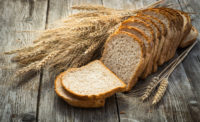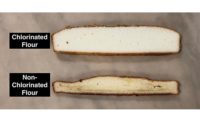How do I know the clean label trend is here to stay? Because you can see the market growing, as both big and small brands put out their “natural” or organic alternatives. While government regulation and public consensus may still be figuring out the fine print, the public knows they want simple, natural products.
There is no FDA definition or ruling for clean label. So if you’re feeling overwhelmed and wondering where to start, you’re not alone. In fact, many consumers often don’t have something specific in mind when looking for products with a cleaner label. But the general consensus is that they’re looking for healthy, natural food made with minimal processing and including a simple ingredient list. Think about ingredients that you could find in your kitchen cupboard.
For the commercial baking and snack industry, this means looking at formulas and processes differently in the search for options to create clean label products that deliver on quality and cost effectiveness.
Emulsifiers. Gums can help strengthen and stabilize dough, as well as decrease the fat content in products. Guar gum and xanthan gum are some of the more-common gums. While some gums like xanthan are not perceived as natural, it’s really an educational issue. Xanthan gum is a byproduct of fermentation, similar to the production of sourdough.
Starches. Modified starches are equally effective in certain dough and batter applications. Created from native starches, the issue with them revolves around the GMO debate rather than the method of modification. There are GMO-free modified starches if you are concerned about this issue. Also, if you’re concerned with chemical modification, pre-gel starches could be considered, though it may not be as functional as the chemically modified starches. When these are used in tandem with enzymes, lecithin and wheat protein isolates, you can obtain a robust emulsifier replacement system.
Dough conditioners. To replace dough conditioners like azodicarbonamide, potassium bromate or potassium iodate, enzymes are by far your best clean label choice. Because they are substrate-specific, different ones can play different roles, like improving machinability, extensibility and emulsifying qualities. Look into carbohydrase, lipases, proteases and oxidases.
Sweeteners. Popular alternatives to high-fructose corn syrup are agave and rice syrup. Unfortunately, sugar alcohols like sorbitol are generally not perceived as clean either. Remember, this is about cleaning up the label, not targeting the diabetic population.
Mold inhibitors. This is one of the more-important categories, as the industry relies heavily on calcium propionate. Mold inhibitors fall into two categories: options that reduce dough pH and options that disrupt the cellular membrane and process. For the first category, use vinegar, prune juice concentrate and raisin paste concentrate. For the second category, use sorbic acid, cultured wheat or whey, cinnamon, cloves, oregano, or rosemary. Some of these alternatives derived from herbs or spices come with their natural aromas, but some ingredient suppliers offer options with reduced flavor and aroma impact.
Flavors and colors. This is a tricky one. Right now, there simply aren’t many natural alternatives that are going to work as well as artificial ones. However, flavor and color suppliers continue to make strides in offering a wider variety of natural options. Take the time to research and test which ones will work best in your formula—and in your price range. Also look into encapsulation technology for solutions.




